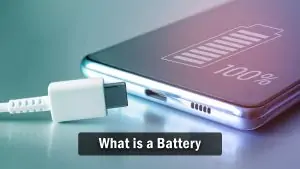NFC stands for Near Field Communication, a short-range wireless communication technology that allows devices to exchange data when they are brought close together, typically within a few centimeters. NFC is commonly used for contactless payments, data transfer, and device pairing. It is a subset of RFID (Radio Frequency Identification) technology and operates on the 13.56 MHz frequency.
Key Features of NFC
- Short-Range Communication: NFC operates at very close distances, usually within 4 centimeters. This short range enhances security, as the devices need to be very close to exchange data.
- Two-Way Communication: NFC enables two devices to communicate with each other, allowing them to both send and receive information. This feature is essential for applications like payments, where secure data exchange is crucial.
- Ease of Use: NFC is designed to be simple and user-friendly. Connecting two devices is often as easy as bringing them close together. For example, tapping a smartphone on a payment terminal or another phone can initiate a transaction or data transfer.
- Passive and Active Modes: NFC devices can operate in passive or active modes. In passive mode, an NFC tag or card (which does not require power) is read by an active device like a smartphone. In active mode, two powered devices communicate with each other.
- Secure Communication: NFC supports secure communication, making it suitable for sensitive applications like mobile payments. Encryption and other security measures help protect data during transmission.
- Versatility: NFC can be used for a variety of applications, including payments, data transfer, ticketing, and access control. It is also used for quickly pairing devices, such as connecting a smartphone to a Bluetooth speaker.
Uses of NFC
- Contactless Payments: One of the most popular uses of NFC is in mobile payment systems like Apple Pay, Google Pay, and Samsung Pay. Users can make payments by tapping their smartphones or NFC-enabled cards on a compatible payment terminal.
- Data Transfer: NFC can be used to quickly transfer data between devices, such as sharing contact information, photos, or files by tapping two smartphones together.
- Public Transport and Ticketing: NFC is used in public transport systems for ticketing and access control. Users can tap their NFC-enabled cards or smartphones on readers to pay fares and gain entry.
- Access Control: NFC is used in security systems to control access to buildings, rooms, or secure areas. Authorized users can tap an NFC card or device on a reader to unlock doors.
- Device Pairing: NFC simplifies the process of pairing devices, such as connecting a smartphone to a Bluetooth speaker or headset. A quick tap can establish the connection without the need for manual setup.
- Loyalty Programs and Coupons: Retailers use NFC to offer loyalty programs and digital coupons. Customers can tap their smartphones on NFC tags or terminals to receive discounts or earn rewards.
Importance of NFC
NFC has become an essential technology in modern-day transactions and communication. Its ease of use, security features, and versatility make it ideal for a wide range of applications. NFC’s role in enabling contactless payments has been particularly significant, offering a convenient and secure alternative to cash and card payments. As more devices and services adopt NFC, its importance continues to grow in areas like retail, transportation, and access control. NFC technology enhances the user experience by providing quick, easy, and secure interactions, making it a valuable tool in the digital age.



